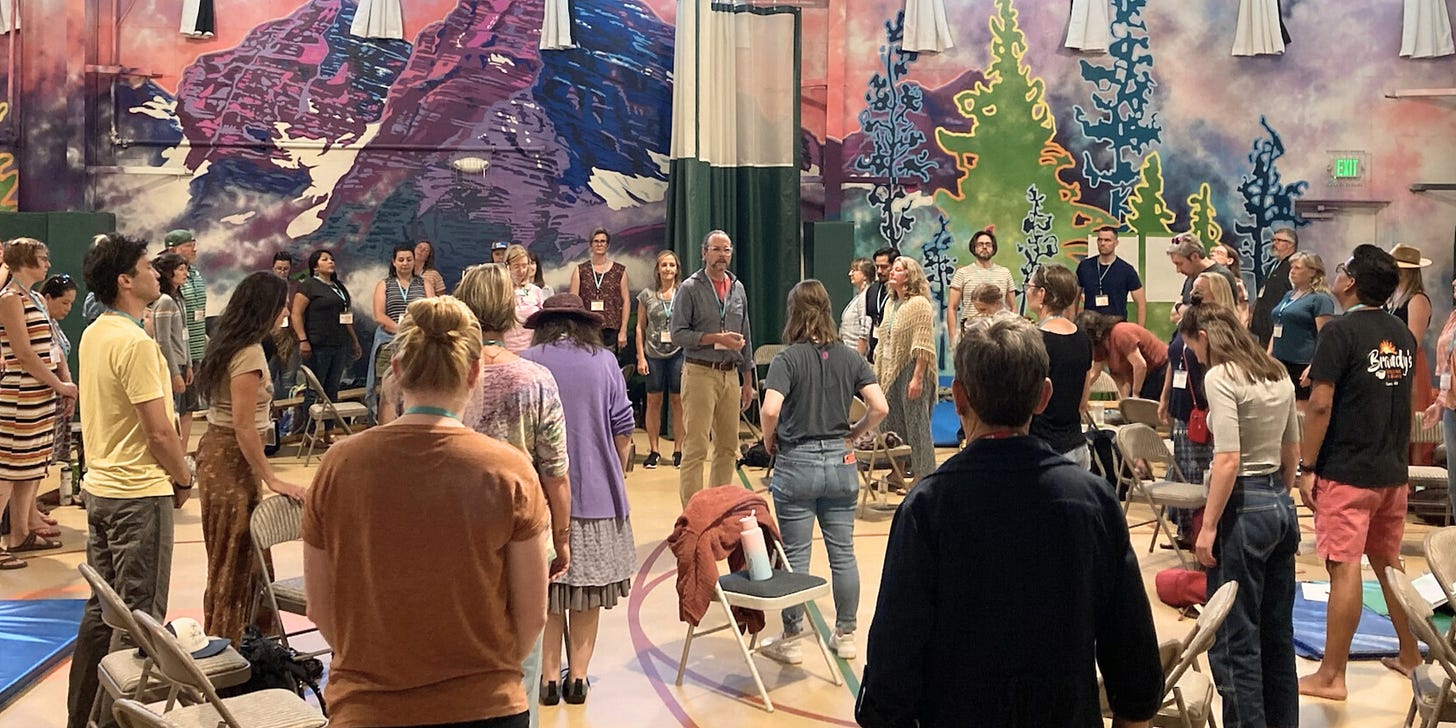The Number One Skill When Teaching Online
And its not actually about teaching.
March 2020 was a nexus point for teachers.
It was the moment in which education deviated and would never be the same. When it was mandated that schools go online as a way of slowing down the spread of Covid-19, all teachers were splashed with the ice cold realization that teaching online is different. It was more challenging to maintain attention, they had no control over the student’s environment, and limited ability to gauge their progress. It felt like they were teaching into a vacuum and there were very few indicators that the students were engaged and learning. Even after schools returned to in-person, teaching had changed.
(students proudly sharing images to go with their stories)
When this transformation took place, my teaching partner and I had been offering courses to kids and adults for about three years. We offered free support and short webinars for teachers and parents, showing how to leverage the number one teaching skill that works as effectively online as it does in person: storytelling.
But we made a key distinction: we are not telling stories to entertain or transfer information; that is a different kind of storytelling.
No, these storytelling skills are designed to tend, to connect, to nurture and to create a safe and supportive environment. These storytelling skills make the classroom ready for learning, rather than launching into the content. The premise is that learning can take place once the students are fully present: physically, emotionally, and intellectually. Otherwise, the teacher will either spend their time and energy on classroom or zoom management rather than delivering the curriculum. Connection and community first, and then the teaching can begin. Being able to create that connection and sense of community is a teacher’s number one skill, whether in person or online.
(author leads a teacher training in 2023)
Restorative Storytelling, a set of 24 tools that prioritize connection over content, is designed to nurture community, and to leverage the spoken word for building enduring and authentic relationships. There is now substantial research supporting the idea that we, as a species, require healthy relationships. We need water, food, warmth, and each other. And we work on those relationships through storytelling.
School children, whether attending an in-person school or online, need this connection like they need food.
We all do. It then behooves the parents, the teachers and administrators, to consciously use storytelling to feed them. We can use storytelling restoratively, not just pedagogically. This is the predicament educators faced in 2020: the children could not learn without first being restored to a state of wellbeing: to feel safe, held, and connected.
Each of the tools of RS has its unique use, whether it is to build a calm and confident presence, or to gracefully adjust your content to the needs of the room, or to shift your vocality to inspire or motivate a student. This September, we begin a new cohort of teachers looking to become proficient in the most powerful communication, management, and therapeutic practice there is: storytelling. Join the next cohort here.
David Sewell McCann, a former class teacher, has produced over 1500 original stories for Sparkle Stories and now teaches children, teachers, and change makers the transformative power of Restorative Storytelling.






